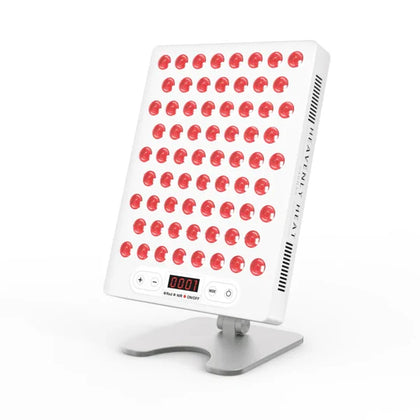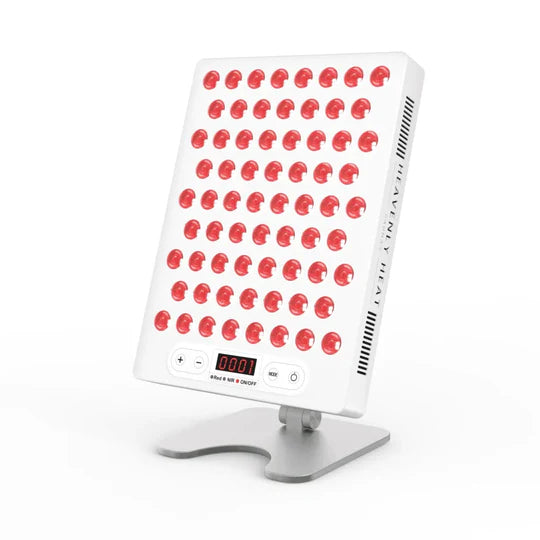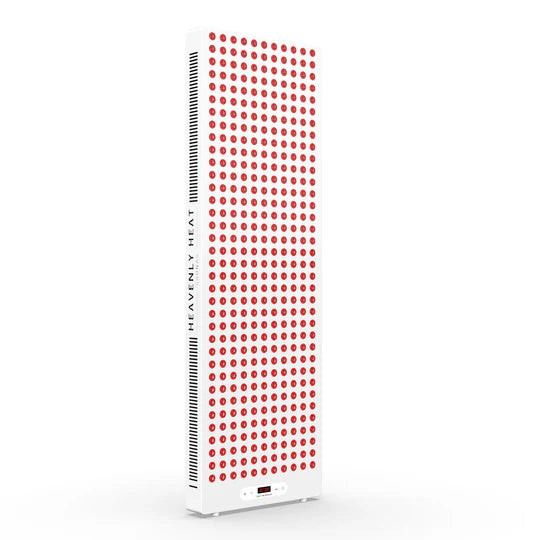Does red light therapy fade tattoos?

Does red light therapy fade tattoos? With 32% of Americans having tattoos, many worry about how treatments like red light therapy might affect their ink.
Imagine spending time and money on meaningful body art, only to risk fading it. But don’t panic! Let’s explore whether red light therapy really poses a threat to your tattoos.
Key Takeaways
- Red light therapy does not fade tattoos, as it uses low-level wavelengths that don’t affect ink pigments.
- Sun exposure, not red light therapy, is the main cause of tattoo fading, so sunscreen is essential.
- Red light therapy is safe for tattoos, but you should wait at least two weeks after getting a new tattoo before using it.
- Always consult a dermatologist before starting red light therapy, especially after getting a tattoo.
- Use lower light intensity and avoid prolonged exposure to protect tattooed skin during red light therapy sessions.
What is Red Light Therapy?
- Red Light Therapy Helps Improve Skin: Red light therapy (RLT) uses low-level red light to reach deep into the skin, improving texture, reducing fine lines, and boosting collagen production, which is key for skin health.
- Collagen Production Keeps Skin Firm and Smooth: RLT stimulates collagen production, which strengthens skin and promotes cell renewal, helping to replace dead cells and maintain a youthful appearance.
- Expert Says RLT Reduces Wrinkles and Inflammation: Dr. Divya Shokeen explains that RLT not only reduces wrinkles but also aids in wound healing and reduces inflammation, making it a powerful skincare treatment.
- Red Light Targets Skin Health, Blue Light Fights Acne: Red light is used to enhance skin health by boosting collagen, while blue light targets acne-causing bacteria, offering a two-pronged approach to skin care.
- RLT Gaining Popularity on Social Media: RLT has become a trend on platforms like TikTok, where users share experiences with LED masks that promise clearer, healthier skin. The hashtag “red LED light therapy” has over 70 million views .
- NASA's Healing Technology Now Benefits Skincare: Originally developed by NASA to heal wounds, RLT is now used for its anti-aging effects. Celebrities like Chrissy Teigen and Victoria Beckham use it to maintain youthful skin without downtime.

Does red light therapy fade tattoos?
- Red Light Therapy Won’t Affect Tattoo Ink: Red light therapy uses low-level light that doesn’t impact tattoo ink pigments, so it won’t cause your tattoos to fade.
- Sun Exposure is the Main Reason Tattoos Fade: The biggest factor in tattoo fading is sun exposure. UV rays break down the tattoo ink, causing the colors to fade over time.
- Some Tattoo Colors Fade Faster in the Sun: Certain colors, like yellow, are more sensitive to sunlight and can fade faster, leading to skin irritation in some cases.
- Sunscreen Helps Protect Tattoos from Fading: Applying sunscreen, especially physical sunscreens with zinc oxide or titanium dioxide, helps prevent tattoos from fading due to sun exposure.
- Covering New Tattoos Prevents Fading: For new tattoos, it’s important to cover them up to avoid sun exposure and protect them from fading during the healing process.

Is red light therapy safe for tattoos?
- Allow Skin to Heal Before Using Red Light Therapy: Wait at least two weeks after getting a new tattoo before starting red light therapy. This gives your skin time to heal and reduces the risk of irritation.
- Red Light Therapy Supports Healing and Reduces Swelling: Once your tattoo has healed a bit, red light therapy can help reduce swelling and speed up healing by repairing tissue and promoting skin regeneration.
- Helps With Itchiness and Scarring During Tattoo Healing: Red light therapy can soothe itchiness and minimize scarring by encouraging quicker skin regeneration and faster tissue repair.
- Red Light Therapy Improves Skin and Makes Tattoos Look Better: Research shows that red light therapy can improve your skin’s texture and help your tattoo stay vibrant by boosting collagen production and enhancing skin tone.
- Reduces Inflammation After Tattoo Removal: If you’re getting a tattoo removed, red light therapy can help reduce irritation, inflammation, and scarring, making the healing process smoother.
- Hydration Boosts Tattoo Appearance and Health: Using hydration treatments like hyaluronic acid alongside red light therapy helps maintain moisture in your skin, improving both tattoo vibrancy and overall skin health.
What precautions should you take for red light therapy after getting a tattoo?
- Consult a dermatologist: Before starting red light therapy, talk to a dermatologist. They can advise you based on your tattoo, skin type, and healing progress.
- Keep an Eye on Your Skin’s Response: Pay attention to how your skin reacts during and after therapy. If you notice irritation, redness, or discomfort near the tattoo, stop and consult a professional. It’s also a good idea to examine your tattooed skin once a month, checking for any new raised bumps, scaly spots, or areas that don’t seem to heal, especially around moles. Staying aware of these changes can help catch potential issues early.
- Use lower intensity: Choose a lower light intensity near a new tattoo. High intensity may irritate the skin and slow healing.
- Wait for the Tattoo to Fully Heal: Make sure your tattoo is fully healed (usually 2–4 weeks) before starting red light therapy. Early treatment may interfere with healing.
- Avoid Prolonged Exposure: Keep sessions short on tattooed skin to avoid discomfort or disrupting the healing process. Exposing tattooed skin to red light for too long, particularly during the early healing stages, can cause damage, like burns or blisters, and may even harm unprotected eyes.

FAQs
Can red light therapy enhance the appearance of healed tattoos?
Red light therapy can enhance the appearance of healed tattoos by stimulating collagen production and increasing blood flow, which helps restore ink brightness and vibrancy. It can also reduce fading, improve clarity, and smooth the texture of tattooed skin, keeping your ink looking sharp and defined.
Is there any risk of ink allergy or reaction during red light therapy sessions?
Red light therapy is generally safe, but those with tattoos should be cautious. While it doesn't interact with tattoo ink, it may cause irritation or inflammation, particularly if the tattoo is healing. People sensitive to certain ink pigments could experience mild irritation. Consult a professional before undergoing red light therapy to ensure it's safe for you.
Does the color of the tattoo (e.g., black vs. color ink) influence how it reacts to red light therapy?
Red light therapy affects tattoos differently depending on ink color. Black ink absorbs light better and fades less, while vibrant colors like red, yellow, and green are more sensitive and may fade faster. Stronger red light treatments can speed up fading in colorful tattoos, so limiting exposure helps preserve their vibrancy.
Can red light therapy be used to speed up healing after laser tattoo removal?
Red light therapy speeds up healing after laser tattoo removal by promoting tissue repair, increasing blood flow, and reducing inflammation. It helps the skin recover faster and boosts collagen production, which is vital for skin regeneration. For optimal results, it should be used several times a week throughout the healing process.













































